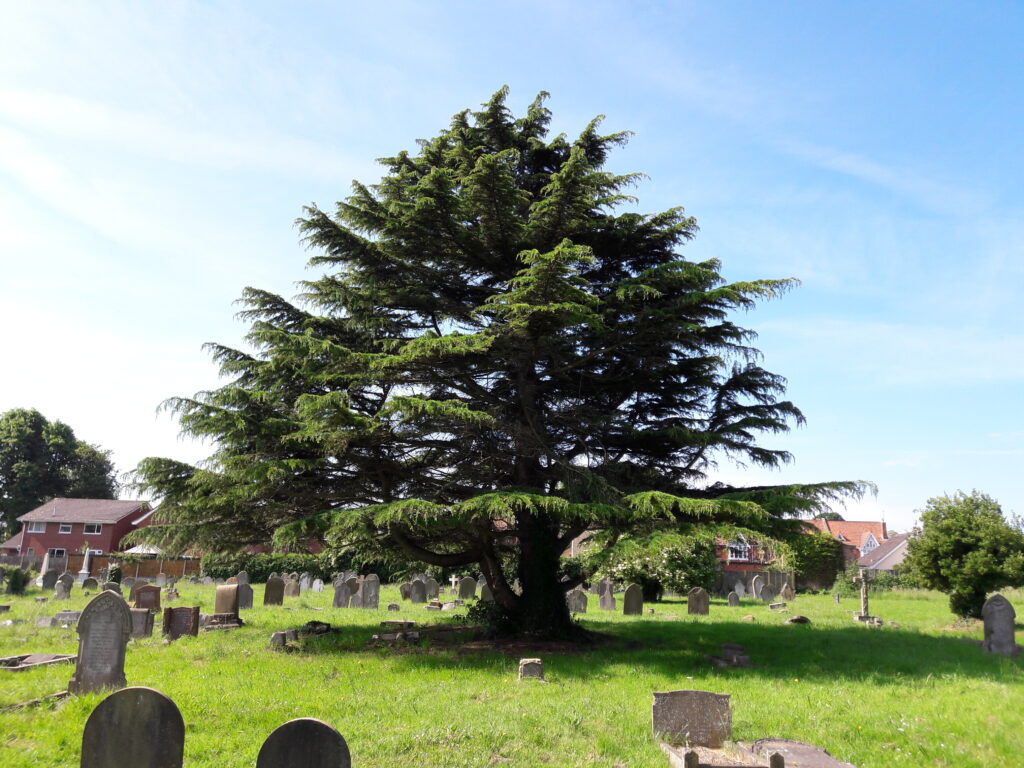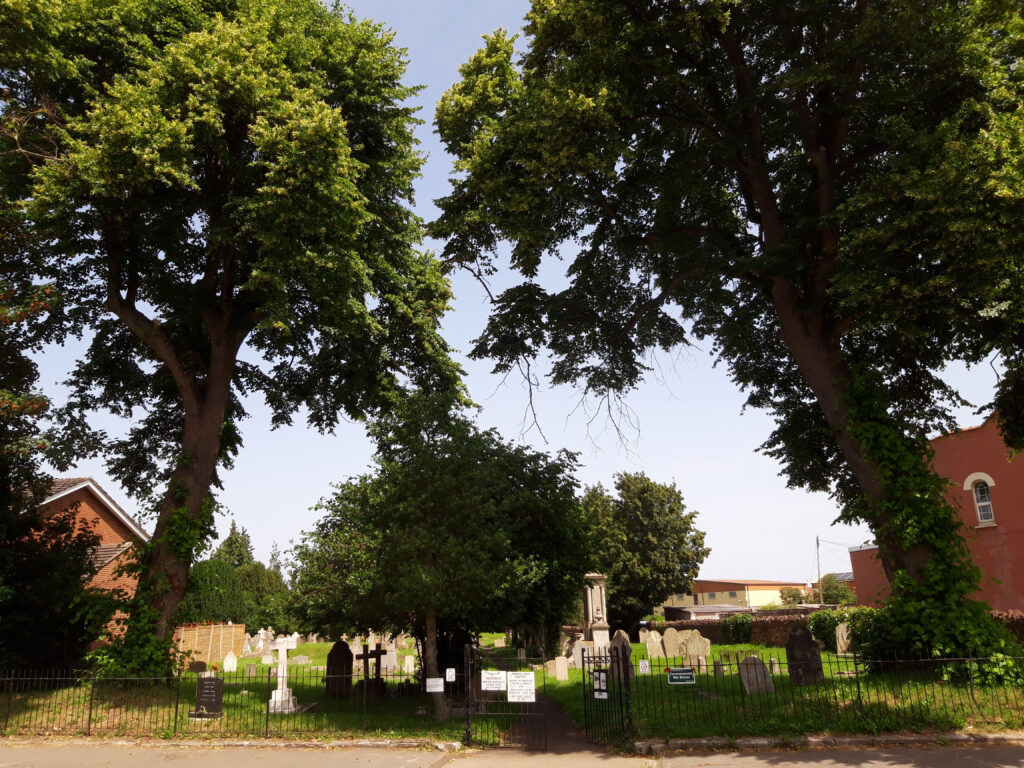This tree survey was carried out by noted horticultural expert Roy Cheek for the Friends in 2022. This was done in order to see how good the coverage was in the cemetery, and how things might be improved. These are the results:

A: Dovaston Yew, Taxus baccata ‘Dovastoniana’ (1) | L: Ash, Fraxinus excelsior (2 – at same place) |
| B: Holly Oak/Holm Oak, Quercus ilex (1) | M: Comon Lime, Tilia europaea (2) |
| C: Sycamore, Acer pseudoplatanus (4) | N: Hazel, Corylus arellana (1) |
| D: Maple, Acer campestre (2) | O: Lawson’s Cypress, Chamaecyparis lawsoniana (15) |
| E: Redwood, Sequoia sempervirens (1) | P: Japanese Spindle, Euonymus japonicus (5) |
| F: Hornbeam Carpinus betulus (1) | Q: Irish Yew, taxus baccata Fastigiato (4) |
| G: Cherry, Prunus (1) | R: Hawthorn, Cratagus monogyna (4) |
| H: Mountain Ash, Sorbus aucuparia (1) | S: Holly, Ilex aquifolium (16) |
| I: Elderberry, Sambucus nigre (1) | T: Field Maple, Acer campestre (3) |
| J: Birch, Betula papyrifera (1) | U: Yew, Taxus baccata (2) |
| K: Cedar of Lebanon, Cedrus libani (1) |
Notable Trees
The trees in the cemetery are a mix of native species that have probably always been a feature of this area, then several trees specifically added for their associations with burial grounds.
B: The Holm Oak

This is the oldest tree in the cemetery. Measuring the girth of the trunk suggests it's about 200 years old, which is older than the cemetery itself. It was probably part of the original boundary separating this field from the next. This area was once woodland, a field nearby was called Margerys Wood in the 1840s Tithe Apportionment Map, so this will be one of the last echoes of that old landscape.
C: Sycamore (and P: Japanese Spindle)

On the left here is a large Sycamore, while on the right are two Japanese Spindles. The latter are more commonly used for hedging, although they make pleasing small trees here.
K: Cedar of Lebanon

Hard to miss in the very centre of the cemetery, the Cedar of Lebanon is a focal point. This will have been planted in the cemetery as an evergreen which were favoured in Victorian cemeteries. As a tree mentioned several times in the Bible, its connections to the Holy Land will have been significant for the Christian community buried here.
M: The Entrance Limes

The two massive trees that flank the entrance to the cemetery are Common Limes. Ours are notable for their sheer size, presumably dating to the laying out the cemetery in 1851. The little fellow in the middle is a Holly. That's more traditional for cemetery planting, since the middle ages the Holly was associated with Christ (while Ivy was associated with the Virgin Mary).
O: Lawson’s Cypress

The Lawson's Cyprus is a popular ornamental evergreen tree, originally from North America. Primarily found in our Dissenters' side of the cemetery. The wood from these trees is apparently rot resistant, hence in Japan it is used for coffins and shrines.
Q: Irish Yew

Yew trees are traditional features of churchyards in Britain, their evergreen nature being symbols of eternal life. The Irish Yew is a variant on the Common Yew usually found in English churchyards, and was very popular in the Victorian period. There are a couple of common Yews on the east side of the cemetery by the Pantomime Society Wall.
S: The Row of Holly

The row of Holly trees (on the left here) seperate the Dissenters' Old Ground from the Anglicans. Holly is a very popular winter tree, and in folklore was thought to be a charm against evil, both reasons for its use in cemeteries. There were quite a few hollies found in our Tree Survey.
